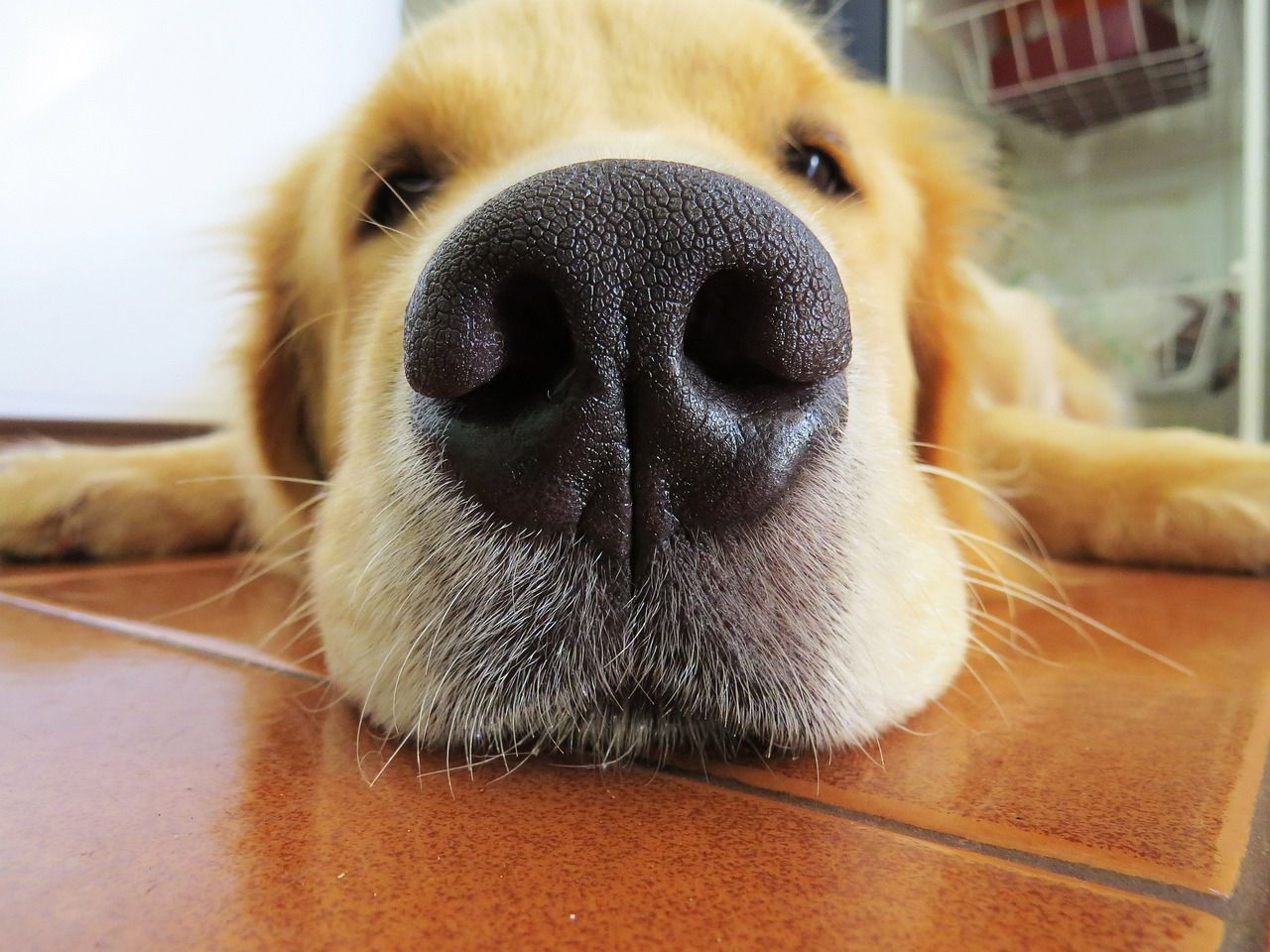Dogs have an incredibly keen sense of smell that far surpasses that of humans.
This heightened olfactory ability is a result of their evolutionary history and specialized anatomical features.
Here's how dogs' sense of smell compares to humans.
Number of Olfactory Receptors
Dogs have a significantly larger number of olfactory receptors in their noses compared to humans.
These receptors are responsible for detecting odor molecules in the environment.

It is estimated that dogs have around 220 million to over 300 million olfactory receptors, while humans have only about 5 million.
Olfactory Bulb
The part of the brain responsible for processing smells, known as the olfactory bulb, is much larger in dogs than in humans.
In fact, the olfactory bulb in a dog's brain is about 40 times larger, relative to brain size, than that in humans.
This increased neural processing power enables dogs to analyze and interpret scents more effectively.
Olfactory Cortex
Dogs also have a larger olfactory cortex, the region of the brain dedicated to analyzing smells.
This allows them to differentiate between various scents and track smells over long distances.
Jacobson's Organ
Dogs possess an additional olfactory structure called the vomeronasal organ, or Jacobson's organ.
This organ allows dogs to detect pheromones and other chemical signals that are not typically detectable by humans.
Scent Discrimination
Dogs have the ability to separate and differentiate various components of a scent, even when they are mixed together.
This is why they can detect specific odors within complex environments, like identifying a single person's scent in a crowded room.









